6 Best Nikon Lenses for Landscape Photography in 2020
Taking pictures of landscapes is one of the most rewarding paths a photographer can walk. It lets you explore the world, get closer to nature, and show the word an untainted beauty worth preserving. You could shoot awesome landscape photos with almost any lens, but wide-angle is the way to go if you’re looking for the best results with the least hassle.
Wide-angle lenses are particularly suited for shooting landscapes as they let you capture a broad image of what’s in front of you without having to step farther back. They focus quickly and can easily achieve a depth of field necessary to preserve miles of rolling dunes or contrast villages and mountainsides with equal clarity. Nikon has a wide variety of lenses that fit these criteria.
These are the six best Nikon lenses for landscape photography available today. All of them deliver impressive results, but there are still differences worth considering. Some lenses only work with smaller Nikon sensors, while others push the limits of conventional construction by offering tilt shift. Check out our top picks and start inspiring the world with your landscape pics.
| Budget |
|---|
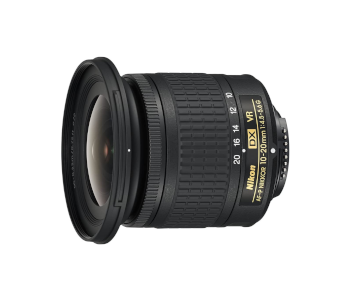 |
| Nikon AF-P DX NIKKOR 10-20mm f/4.5-5.6G VR |
| 4.1/5.0 |
| Mount: Nikon F |
| Image stabilization: Yes |
| Quiet and accurate autofocus. |
| Check Amazon |
| Best Value |
|---|
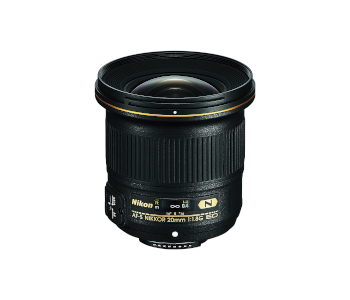 |
| Nikon AF-S FX NIKKOR 20mm f/1.8G ED |
| 4.5/5.0 |
| Mount: Nikon F |
| Image stabilization: No |
| Handles distortion and flaring well. |
| Check Amazon |
| Top Pick |
|---|
 |
| Nikon AF-S NIKKOR 14-24mm f/2.8G ED |
| 4.7/5.0 |
| Mount: Nikon F |
| Image stabilization: No |
| Remarkable overall sharpness. |
| Check Amazon |
Nikon Lenses for Landscape Photography Comparison Table
| Image | Product | Overall Rating | Image quality | Build quality | Versatility | Price |
|---|---|---|---|---|---|---|
 | Nikon AF-S NIKKOR 14-24mm f/2.8G ED | 4.7 | 4.8 | 4.6 | 4.8 | Check Price |
 | Nikon AF-S FX NIKKOR 20mm f/1.8G ED | 4.5 | 4.5 | 4.4 | 4.5 | Check Price |
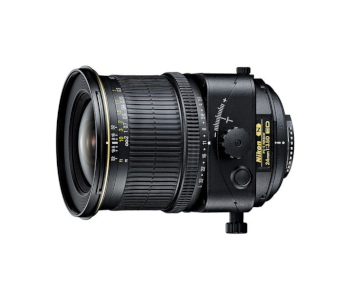 | Nikon PC-E NIKKOR 24mm f/3.5D ED Tilt-Shift Lens | 4.6 | 4.7 | 4.5 | 4.7 | Check Price |
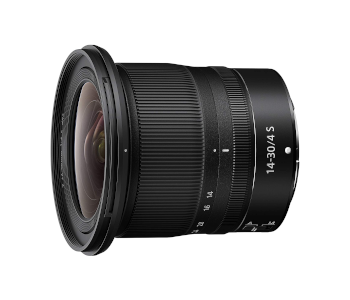 | Nikon NIKKOR Z 14-30mm f/4 S | 4.3 | 4.4 | 4.2 | 4.3 | Check Price |
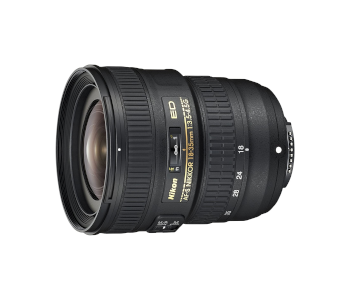 | Nikon AF-S NIKKOR 18-35mm f/3.5-4.5G ED | 4.3 | 4.3 | 4.1 | 4.4 | Check Price |
 | Nikon AF-P DX NIKKOR 10-20mm f/4.5-5.6G VR | 4.1 | 4.2 | 3.8 | 4.3 | Check Price |
1. Best Overall – Nikon AF-S NIKKOR 14-24mm f/2.8G ED
Editor’s Rating: 4.7/5
The NIKKOR 14-24mm f/2.8G ED was a landmark lens when it first came out since it was the first in the world to feature a max aperture of f/2.8 at 14mm. Over a decade later, it still reigns supreme as Nikon’s best landscape lens due to amazing sharpness and a build that lets you take it anywhere. Third-party companies have since caught up, but the original should remain your go-to option nevertheless.
Overview of Features
You’d think that the NIKKOR 14-24mm f/2.8G ED was a telephoto lens on account of its weight. The lens is built to last and can withstand extreme weather conditions due to extensive weather sealing. Its barrel is metal, while the non-removable lens hood is plastic. We love the focus ring’s action since it turns precisely and starts resisting once you reach either end of the range for smoother stopping. The zoom ring is broad and grippy while also serving as the center of the lens’s excellent balance.
Nikon equipped the lens with then state-of-the-art technology. Its Silent Wave Motor impresses with fast and quiet performance. Autofocus on the NIKKOR 14-24mm f/2.8G ED is stellar, snapping to subjects in a fraction of a second and barely slowing down during sunsets or stormy weather. Glare is a non-issue as well, thanks to two kinds of lens coating.
Exceptional sharpness from corner to corner is the main reason the NIKKOR 14-24mm f/2.8G ED is a must-buy all these years later. Feel free to frame landscape shots that need to be detailed throughout at 14mm and f/2.8 as the edges and corners are barely softer than its center. The resolution jumps noticeably at f/4 and reaches its pinnacle at f/5.6 regardless of focal length.
Surprisingly for a wide-angle lens, the NIKKOR 14-24mm f/2.8G ED’s wide aperture allows it to create pleasingly blurry backgrounds. You can even use it to focus on a detail like a patch of flowers and snap artful photos other similar lenses couldn’t deliver. Vignetting is controlled very well for this lens type and is only pronounced when wide open. There’s some chromatic aberration of the lateral kind you can correct in post.
What We Didn’t Like
Owners of newer Nikon full-frame cameras should be aware that the NIKKOR 14-24mm f/2.8G ED suffers from serious focus shift. The solution is to acquire focus at a narrow aperture like f/8 and then step up for best results. The lens also shows strong barrel distortion at its widest settings, but changing the focal length or f-stop helps immediately.
| Tech Specs |
|---|
| Dimensions: 3.9 x 3.8 x 5.2 in. |
| Weight: 2.2 lbs. |
| Mount: Nikon F |
| Minimum focal length: 14mm |
| Maximum focal length: 24mm |
| Maximum aperture: f/2.8 |
| Minimum aperture: f/22 |
| Minimum focus distance: 11 in. |
| Angle of view: 114° to 84° |
| Image stabilization: No |
| The Pros |
|---|
| Remarkable overall sharpness |
| Tough build and comprehensive weather sealing |
| Quick autofocus |
| Can produce blurry backgrounds with minimal flaring |
| The Cons |
|---|
| Prone to focus shift when paired with high-res full-frame cameras |
| Pronounced barrel distortion when wide open |
2. Best Value – Nikon AF-S FX NIKKOR 20mm f/1.8G ED
Editor’s Rating: 4.5/5
The NIKKOR 20mm f/1.8G ED is a great alternative to our overall winner if you’re willing to give up the convenience of variable focal length. It has a wider aperture that lets you photograph landscapes at dusk and capture breathtaking pictures of the night sky. The lens also has superb flaring resistance and next to no barrel distortion. Best of all, it’s half the price of the NIKKOR 14-24mm f/2.8G ED and a genuine bargain for what you’re getting.
Overview of Features
One of the main advantages of a wide-angle prime is that it can be smaller and lighter than a zoom lens yet still retain outstanding optical properties. The NIKKOR 20mm f/1.8G ED was built to go with full-frame cameras but gels nicely with APS-C models too due to its focal length and mere 12.5 ounces of weight. The lens has a metal mount and rubber gasket that protect it from dust and moisture buildup.
Nikon used the SWM technology to make the lens’s autofocus motor responsive and silent. It starts at eight inches and ends up at infinity at three feet. That’s a short distance to cover, and the lens can do so in under half a second. But that’s the most extreme case and means that focusing under normal circumstances is much faster.
The NIKKOR 20mm f/1.8G ED has strong central sharpness across its aperture range. Edges and corners are soft at f/1.8 but improve significantly when stepped down to f/2.8 and are at their best when at f/4. You can narrow the aperture all the way to f/11 and get detailed results. The lens has 13 elements in 11 groups and superb Nano coating, so you can shoot directly into the sun at low apertures without flaring or contrast issues.
The NIKKOR 20mm f/1.8G ED has remarkable barrel distortion control, exhibiting just one percent at f/1.8. There’s some chromatic aberration, but nothing loading up the lens’s profile in Lightroom couldn’t fix. This isn’t a lens designed for beautiful bokeh due to its narrow focus span, but it can deliver under the right lighting if you don’t mind onion-shaped circles.
What’s Bad About It?
The NIKKOR 20mm f/1.8G ED has serious vignetting issues at f/1.8. Its corners are much darker than the rest of the image at max aperture, so step down and go for longer exposure to compensate. You should avoid f/1.8 for landscapes anyway since the corners and edges are at their softest.
| Tech Specs |
|---|
| Dimensions: 3.3 x 3.3 x 3.2 in. |
| Weight: 12.5 oz. |
| Mount: Nikon F |
| Focal length: 20mm |
| Maximum aperture: f/1.8 |
| Minimum aperture: f/16 |
| Minimum focus distance: 7.9 in. |
| Angle of view: 94° |
| Image stabilization: No |
| The Pros |
|---|
| Excellent value for the money |
| Light yet durable |
| Impressively fast autofocus |
| Handles distortion and flaring well |
| The Cons |
|---|
| Soft edges and pronounced vignetting when wide open |
3. Nikon PC-E NIKKOR 24mm f/3.5D ED Tilt-Shift Lens
Editor’s Rating: 4.6/5
Landscape photographers rely on narrow apertures more than others as they’re essential for achieving greater depth of field. However, stepping down past a certain point is unwise since diffraction increases image softness. One way of correcting this is by using a tilt shift lens that can increase the depth of field at apertures where diffraction isn’t an issue yet. The NIKKOR 24mm f/3.5D ED is one such lens, and the best Nikon has to offer for niche landscape photos.
Overview of Features
This is the most unusual looking lens on review due to a mechanism that allows you to tilt the glass sideways by 8.5 degrees and shift it up or down by 11.5 millimeters. All of its tilt shift components and the barrel are metal, while the lens hood and filter threads are plastic. The lens is sturdily built but isn’t wholly weather-sealed due to the nature of its construction.
The NIKKOR 24mm f/3.5D ED isn’t for everyone since it lacks autofocus. Thankfully, the focus ring is damped for precise handling and broad enough for increased balance and stability when held in the left hand. How well the lens performs will depend on your manual focusing proficiency and understanding of depth of field and the effects of tilting on the final image.
That being said, the NIKKOR 24mm f/3.5D ED is a sharp lens with excellent optical properties. It starts out strong at f/3.5 with high central sharpness. The corners are visibly softer at this aperture. However, they improve markedly at f/4 and become tack-sharp at f/5.6 and f/8, where you’re the most likely to take landscape photos with the help of the tilt shift mechanism.
Barrel distortion is handled very well for a wide-angle lens, reaching only one percent at max aperture. Vignetting is impressively low when the lens is in a neutral position but becomes pronounced at the side you’re tilting away from. Chromatic aberration appears only if you shift the lens, while ghosting and flaring aren’t a problem thanks to several extra-low dispersion elements and Nano coating.
Are There Drawbacks?
The NIKKOR 24mm f/3.5D ED is by far the most expensive lens on review. It’s not particularly hard to learn how to use it, but some photographers may find they don’t want to adapt to a fully manual workflow.
| Tech Specs |
|---|
| Dimensions: 3.3 x 3.3 x 4.3 in. |
| Weight: 1.6 lbs. |
| Mount: Nikon F |
| Focal length: 24mm |
| Maximum aperture: f/3.5 |
| Minimum aperture: f/32 |
| Minimum focus distance: 8.3 in. |
| Angle of view: 84° |
| Image stabilization: No |
| The Pros |
|---|
| Tilt shift lets you achieve greater depth of field at larger apertures |
| Excellent sharpness |
| Little barrel distortion and vignetting |
| Controlled chromatic aberration |
| The Cons |
|---|
| Expensive |
| Niche lens not everyone will want to learn how to use |
4. Nikon NIKKOR Z 14-30mm f/4 S
Editor’s Rating: 4.3/5
Nikon’s new line of Z mirrorless cameras isn’t supported by many lenses yet, but the NIKKOR Z 14-30mm f/4 S makes transitioning from a DSLR tempting nevertheless. It’s remarkably small and light, not to mention wide enough for stunning and detailed vistas. The lens also has a minimum focusing distance of just 11 inches, letting you capture small subjects like animals at the center of a sprawling background.
Overview of Features
The first thing you’ll notice about the NIKKOR Z 14-30mm f/4 S is its small size. You’d be forgiven to think it’s a kit lens since it extends to a mere 3.4 inches and weighs just over a pound. Mirrorless cameras have no internal glass elements, so their lenses can be more compact while retaining complex optics. This lens is both weather-sealed and coated with fluorine for extra smudge and sweat protection.
Focusing is handled internally by a silent stepping motor. The NIKKOR Z 14-30mm f/4 S doesn’t turn while doing so, meaning you can attach ND and polarizing filters to its 82mm thread. You’ll love this lens if you’re a documentary filmmaker since it makes no noise while focusing, and the thread lets you control glare while maintaining optimum shutter speeds. You can step in to manually adjust the focus at any time or set the ring to control either EV compensation or aperture instead.
The NIKKOR Z 14-30mm f/4 S’s central sharpness is excellent across the board. Some softness is observable in the corners at f/4 and 14mm. Stepping down to f/5.6 brings them in line with the rest of the image. The lens is as sharp as it gets at 20mm between f/5.6 and f/11 but performs well at most settings. We wouldn’t recommend turning the aperture down to f/22 at any focal length since diffraction has a noticeable impact on image quality.
Flare resistance is the NIKKOR Z 14-30mm f/4 S’s best optical feature. You’d have to be aiming directly at the sun to get artifacts, so don’t hesitate to make it part of your compositions. Chromatic aberration is present yet easy to correct in post. Vignetting is strongest at f/4 and 14mm but not unusual for such a lens. The NIKKOR Z 14-30mm f/4 S also takes advantage of image stabilization inherent to full-frame Z-mount cameras, letting you use wider apertures without getting blurry pictures.
What We Didn’t Like
The NIKKOR Z 14-30mm f/4 S suffers from one of the most severe barrel distortions we’ve ever seen at 14mm and f/4, so much so that it looks like a fish-eye lens if uncorrected. Luckily, you’ll never see such images as Nikon cameras and Lightroom automatically correct the flaw. This decreases the number of pixels in the image and makes the edges softer. The multifunction ring is adequate for focusing but too sensitive for precise EV comp or aperture correction.
| Tech Specs |
|---|
| Dimensions: 3.5 x 3.5 x 3.4 in. |
| Weight: 1.1 lbs. |
| Mount: Nikon Z |
| Minimum focal length: 14mm |
| Maximum focal length: 30mm |
| Maximum aperture: f/4 |
| Minimum aperture: f/22 |
| Minimum focus distance: 11 in. |
| Angle of view: 114° to 72° |
| Image stabilization: No |
| The Pros |
|---|
| Amazingly light and compact |
| Great sharpness throughout most of its range |
| Silent autofocus |
| Immaculate weather sealing and smudge resistance |
| The Cons |
|---|
| Severe barrel distortion at 14mm and f/4 |
| Sensitive focus ring |
5. Nikon AF-S NIKKOR 18-35mm f/3.5-4.5G ED
Editor’s Rating: 4.3/5
Are you looking for an affordable lens that works equally well for landscapes and portraits? In that case, the NIKKOR 18-35mm f/3.5-4.5G ED is a fantastic choice. It has surprisingly good optical properties for a variable aperture lens, and is sharp enough for pleasing photos regardless of focal length. Add a compact build, and you’ve got a versatile wide-angle lens at a fair price.
Overview of Features
The NIKKOR 18-35mm f/3.5-4.5G ED isn’t as well-built as our more expensive entries, but it makes up for that with lightness and superb balance. Everything except the mount is made from plastic, and a rubber gasket adds to its weather resistance. The lens balances well on full-frame cameras but works with cropped DX sensor models too. Its focus and zoom rings are nicely ridged and very wide for easy handling.
This is another lens whose Silent Wave Motor makes the autofocus unobtrusive and effective. It’s a great performer regardless of whether since low light doesn’t significantly increase lock-on times. Switching the focus ring to M/A allows you to adjust focus on your own. There are no hard stops, so focusing at infinity and its minimum distance of 11 inches can be challenging.
The NIKKOR 18-35mm f/3.5-4.5G ED achieves optimum results at 20mm. The entire image is sharp at f/4 and improves in quality until you reach f/8. Decreasing the focal length to 18mm increases max aperture to f/3.5 and sees a reduction in edge and corner quality when wide open. Zooming in to 35mm softens the corners to acceptable levels.
Chromatic aberration is handled well on the NIKKOR 18-35mm f/3.5-4.5G ED as is vignetting. You can get lovely sunset landscape shots with the lens but be mindful of the sun’s position during daytime shots since veiling flare can reduce the contrast and lead to detail loss. You’ll want to keep your subjects’ surroundings in focus since the bokeh this lens produces isn’t smooth, but that’s not a downside given its purpose.
What’s Bad About It?
The NIKKOR 18-35mm f/3.5-4.5G ED is another lens with pronounced barrel distortion. The effect isn’t as severe as on the Z-mount model, but it persists throughout the entire focal range and needs to be corrected.
| Tech Specs |
|---|
| Dimensions: 3.3 x 3.3 x 3.9 in. |
| Weight: 13.6 oz. |
| Mount: Nikon F |
| Minimum focal length: 18mm |
| Maximum focal length: 35mm |
| Maximum aperture: f/3.5 to f/4.5 |
| Minimum aperture: f/22 to f/29 |
| Minimum focus distance: 11 in. |
| Angle of view: 100° to 63° |
| Image stabilization: No |
| The Pros |
|---|
| Versatile landscape lens at an appealing price |
| Reliable and fast autofocus |
| No problems with chromatic aberration or vignetting |
| Ghosting and flare aren’t an issue |
| The Cons |
|---|
| Mediocre corner sharpness |
| Pronounced barrel distortion |
6. Best Budget Option – Nikon AF-P DX NIKKOR 10-20mm f/4.5-5.6G VR
Editor’s Rating: 4.1/5
Our budget entry is a travel-friendly lens for Nikon APS-C cameras, the NIKKOR 10-20mm f/4.5-5.6G VR. It comes with image stabilization, is effortless to use, and has solid overall optics you wouldn’t expect from a lens so cheap. There are a few quirks to consider, but this lens is a fantastic shooter if you’re aware of and work around them.
Overview of Features
Portability is the NIKKOR 10-20mm f/4.5-5.6G VR’s most noteworthy design aspect. The lens has excellent balance on APS-C cameras and doesn’t extend too far out. Its body is made from polycarbonate, and there are no physical switches. The mount and petal-shaped lens hood are both plastic, but that’s not a problem considering the lens’s dimensions. Its zoom ring takes up the better part of the barrel while the focus ring is thin.
Nikon outfitted the NIKKOR 10-20mm f/4.5-5.6G VR with a pulse motor, a fine choice for its size and price. It’s an accurate performer that snaps onto targets in reasonable time. The lens also has Vibration Reduction, an image stabilization technology uncommon for wide-angle models. This makes it a worthwhile choice for filmmakers as it lets you take panning handheld shots while reducing camera shake by more than three stops.
You’ll want to set the focal length between 12 and 14mm and pair it with apertures from f/5.6 to f/11 to bring out the lens’s peak performance. We were particularly impressed with its entire display at 14mm since there’s minimal difference between corner and central sharpness, and both values are excellent. Increasing the focal length to 18 and 20mm lets you achieve a good field depth by stepping down to values as low as f/22. We wouldn’t go any lower than that due to diffraction, though.
There are 14 elements in 11 groups at the heart of his lens, some of which are low-dispersion and aspherical. This helps the NIKKOR 10-20mm f/4.5-5.6G VR bring chromatic aberration to a minimum while also adding to flare and artifact resistance. Barrel distortion is evident when the lens is wide open but not so severe that you couldn’t set it straight in-camera. The corners are two stops darker than the center at 10mm and f/4.5 changing either aperture or focal length helps immediately.
Are There Drawbacks?
The NIKKOR 10-20mm f/4.5-5.6G VR shows soft edges at 10mm and needs to be stepped down to f/8 to reach acceptable levels. You can get around this by framing landscapes with grass at the bottom and the sky on top to make the softness less of an issue. The lens lacks weather sealing. We wouldn’t expect any at this price, but it’s at odds with its portability and purpose.
| Tech Specs |
|---|
| Dimensions: 3 x 3 x 2.9 in. |
| Weight: 8.1 oz. |
| Mount: Nikon F |
| Minimum focal length: 10mm |
| Maximum focal length: 20mm |
| Maximum aperture: f/4.5 to f/5.6 |
| Minimum aperture: f/29 |
| Minimum focus distance: 8.7 in. |
| Angle of view: 109° to 70° |
| Image stabilization: Yes |
| The Pros |
|---|
| Quiet and accurate autofocus |
| Effective image stabilization great for video |
| No CA or flaring issues |
| Distortion and vignetting are present but controlled |
| The Cons |
|---|
| No weather sealing |
| Soft corners at 10mm |
Contents
- Nikon Lenses for Landscape Photography Comparison Table
- 1. Best Overall – Nikon AF-S NIKKOR 14-24mm f/2.8G ED
- Overview of Features
- What We Didn’t Like
- 2. Best Value – Nikon AF-S FX NIKKOR 20mm f/1.8G ED
- Overview of Features
- What’s Bad About It?
- 3. Nikon PC-E NIKKOR 24mm f/3.5D ED Tilt-Shift Lens
- Overview of Features
- Are There Drawbacks?
- 4. Nikon NIKKOR Z 14-30mm f/4 S
- Overview of Features
- What We Didn’t Like
- 5. Nikon AF-S NIKKOR 18-35mm f/3.5-4.5G ED
- Overview of Features
- What’s Bad About It?
- 6. Best Budget Option – Nikon AF-P DX NIKKOR 10-20mm f/4.5-5.6G VR
- Overview of Features
- Are There Drawbacks?

